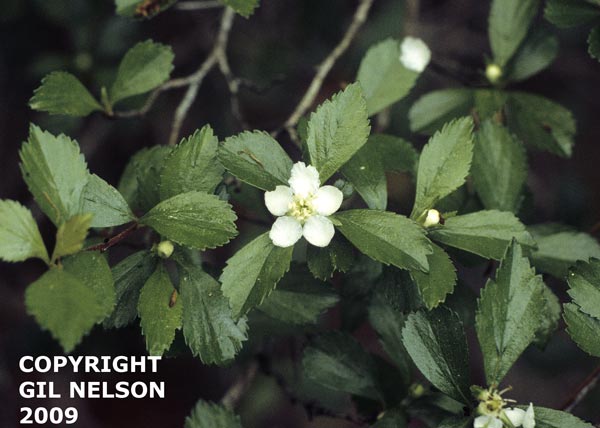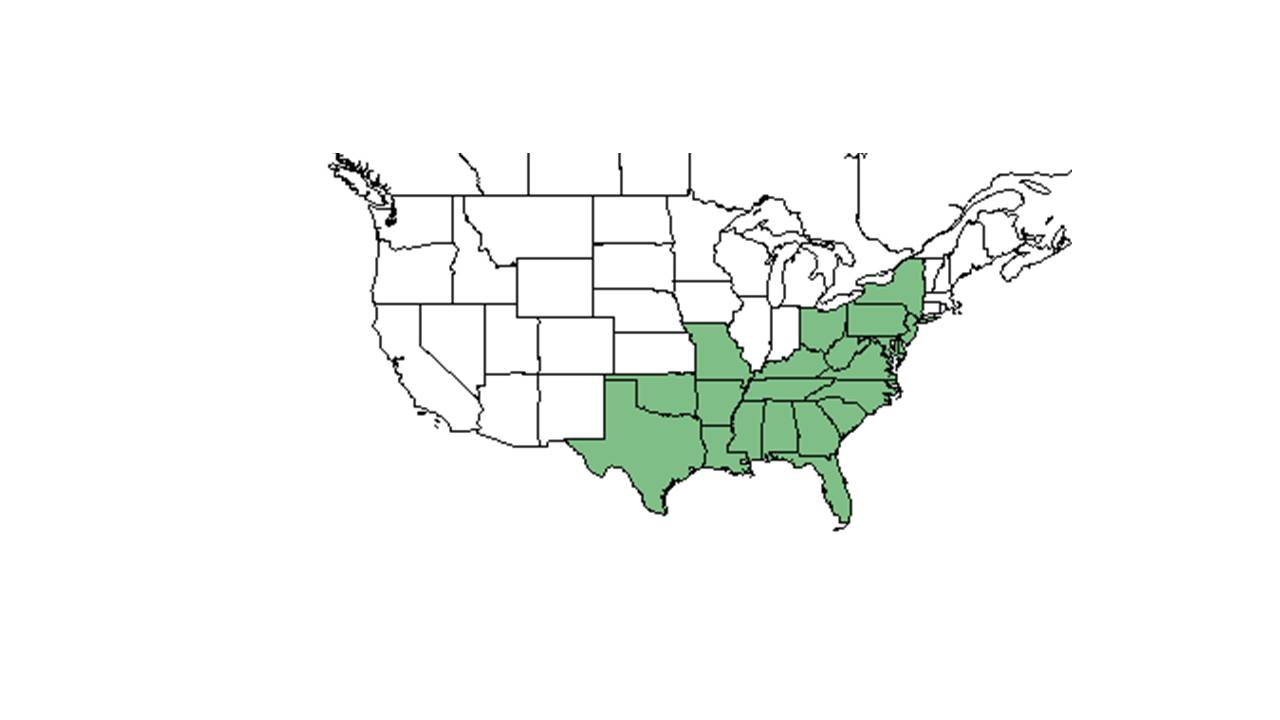Difference between revisions of "Crataegus uniflora"
(→Ecology) |
(→Pollination and use by animals) |
||
| Line 47: | Line 47: | ||
===Pollination and use by animals=== | ===Pollination and use by animals=== | ||
| − | + | ''Crataegus uniflora'' has been observed to be pollinated by midges.<ref name=pfaf/> Fruits are eaten by several species of birds. The dense branching supplies shelter to a variety of animals.<ref name="discover">[[http://www.discoverlife.org/mp/20q?search=Crataegus+uniflora]]Discover Life. Accessed: April 14, 2016</ref> | |
| − | |||
| − | Fruits are eaten by several species of birds. The dense branching supplies shelter to a variety of animals.<ref name="discover">[[http://www.discoverlife.org/mp/20q?search=Crataegus+uniflora]]Discover Life. Accessed: April 14, 2016</ref> | ||
<!--===Diseases and parasites===--> | <!--===Diseases and parasites===--> | ||
Revision as of 12:42, 11 June 2021
| Crataegus uniflora | |
|---|---|

| |
| photo by Gil Nelson | |
| Scientific classification | |
| Kingdom: | Plantae |
| Division: | Magnoliophyta - Flowering plants |
| Class: | Magnoliopsida – Dicotyledons |
| Order: | Rosales |
| Family: | Rosaceae |
| Genus: | Crataegus |
| Species: | C. uniflora |
| Binomial name | |
| Crataegus uniflora Münchh | |

| |
| Natural range of Crataegus uniflora from USDA NRCS Plants Database. | |
Common names: Dwarf hawthorn; oneflower hawthorn
Contents
Taxonomic notes
Synonyms: Crataegus gregalis Beadle; C. arenicola W.W. Ashe; C. raleighensis W.W. Ashe; C. pentaneura W.W. Ashe.[1]
Varieties: none.[1]
Description
A description of Crataegus uniflora is provided in The Flora of North America. This species has been described as a small, tree-like, scraggly scrub.[2]
Distribution
Found from New York and New Jersey south to north Florida, west to east Texas and northeast to south Missouri.[3]
Ecology
Habitat
This species has been observed in semi open, mixed hardwood woodlands, sandy ridges, slopes, and within stands of slash pine on sandy soils. Thrives in open light and shaded environments in moist loamy soils, dry sand, and loamy sands. It also occurs in disturbed sandy soils associated with sand pine, longleaf pine, and turkey oak community.[2]
Associated species includes slash pine, sand pine, longleaf pine, turkey oak, red oak, post oak, mockernut hickory, magnolia, Viburnum rufidulum, and others.[2]
Phenology
C. uniflora is a hermaphroditic species[4] with inferior ovaries.[5] The species has been observed flowering in March, April and July and fruiting in April and June.[6][2]
Pollination and use by animals
Crataegus uniflora has been observed to be pollinated by midges.[4] Fruits are eaten by several species of birds. The dense branching supplies shelter to a variety of animals.[7]
Conservation, cultivation, and restoration
Cultural use
Photo Gallery
References and notes
- ↑ 1.0 1.1 Weakley, A.S. 2015. Flora of the southern and mid-atlantic states. Working Draft of 21 May 2015. University of North Carolina at Chapel Hill, Chapel Hill, North Carolina.
- ↑ 2.0 2.1 2.2 2.3 Florida State University Robert K. Godfrey Herbarium database. URL: http://herbarium.bio.fsu.edu. Last accessed: June 2014. Collectors: Robert K. Godfrey, Loran C. Anderson, Angus Gholson, Wilson Baker, Cecil R Slaughter, Andre F. Clewell, Annie Schmidt, M. Boothe, B. Boothe, Kathleen Craddock Burks, and Richard Gaskalla. States and Counties: Florida: Alachua, Clay, Calhoun, Gadsden, Leon, Liberty, and Putnam.
- ↑ [[1]]Lady Bird Johnson Wildflower Center. Accessed: April 15, 2016
- ↑ 4.0 4.1 [[2]]Accessed: April 16, 2016
- ↑ [[3]]Accessed: April 16, 2016
- ↑ Nelson, G. PanFlora: Plant data for the eastern United States with emphasis on the Southeastern Coastal Plains, Florida, and the Florida Panhandle. www.gilnelson.com/PanFlora/ Accessed: 8 DEC 2016
- ↑ [[4]]Discover Life. Accessed: April 14, 2016